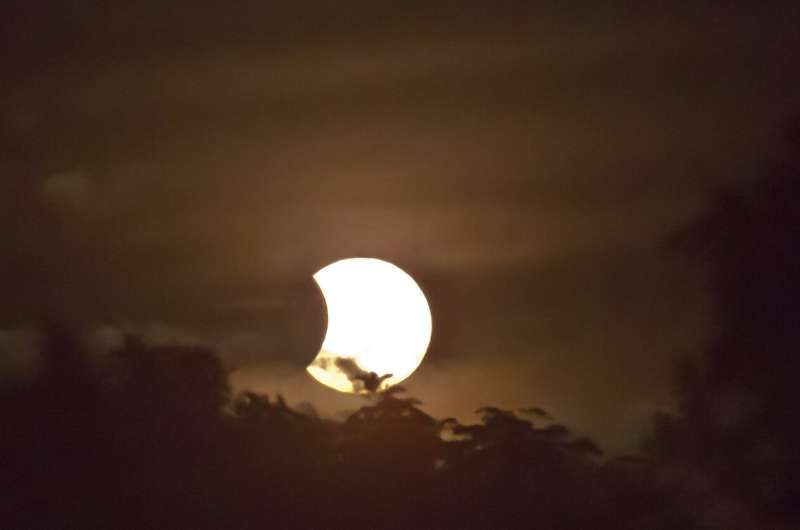When was the last solar eclipse?
The last total eclipse visible on the East Coast was in 2017—the first for the U.S. in 38 years.
How often do total solar eclipses occur?
Total solar eclipses happen every 18 months, but viewing is limited with the path of totality often occurring over the ocean rather than populated areas, according to Baylor University. While solar eclipses occur about two to four times per year, NASA reports a total eclipse only happens once every 100 years or so in any given location on Earth.
What is the solar eclipse's path?
The initial viewing of totality in North America will commence on Mexico's Pacific coast at 11:07 a.m. PDT, with the eclipse making its way north and east, including through Erie, Pennsylvania, where totality will begin at 3:16 p.m. EDT, per NASA's schedule.
What to expect during an eclipse?
There are distinct stages of a total solar eclipse to keep an eye out for. (Be careful! More on eye safety below.)
As the moon passes between the sun and Earth, the sun will have a crescent shape. The partial eclipse phase lasts between 70 to 80 minutes, marking the first contact when the moon first "touches" the sun, at least visually.
Just before totality, look out for shadow bands—rapidly moving, long, dark bands separated by white spaces—on the sides of buildings or the ground.
You might also observe Baily's beads, fleeting points of light that appear around the moon's edges as it continues its path across the sun. When they disappear, only a single bright spot will remain along the edge of the moon's shadow, resembling a giant diamond ring formed by the rest of the sun's atmosphere.
Once the diamond ring disappears, you can look at the total eclipse safely with the naked eye. During totality, notice the chromosphere, a thin circle of pink around the moon (a region of the solar atmosphere), and the corona, streams of white light (the outer solar atmosphere). Totality may last for only a minute or two in some viewing spots. According to Pennsylvania Department of Conservation and Natural Resources, the event will last a maximum of 3 minutes and 41 seconds.
What happens if you look at a solar eclipse?
It's important to remember that looking directly at the sun is not safe. Viewing the eclipse without glasses can burn your retinas and cause eye damage. This can result in blurred vision, dark or yellow spots, pain in bright light, or loss of vision in the center of your eye.
How to keep your eyes safe during an eclipse
You'll need specialized eye protection for solar viewing with camera lens, binoculars, or telescopes. Make sure you have a special-purpose solar filter over the front to prevent severe eye injury, NASA advises.
Be sure to wear solar viewing glasses, also known as eclipse glasses, or a safe, handheld solar viewer when viewing partial phases before and after the total solar eclipse directly with your eyes. You can also view with a pinhole projector for indirect viewing. (There are plenty of online resources for making your own, which can be fun for kids.)
2024 The Philadelphia Inquirer, LLC. Distributed by Tribune Content Agency, LLC.



